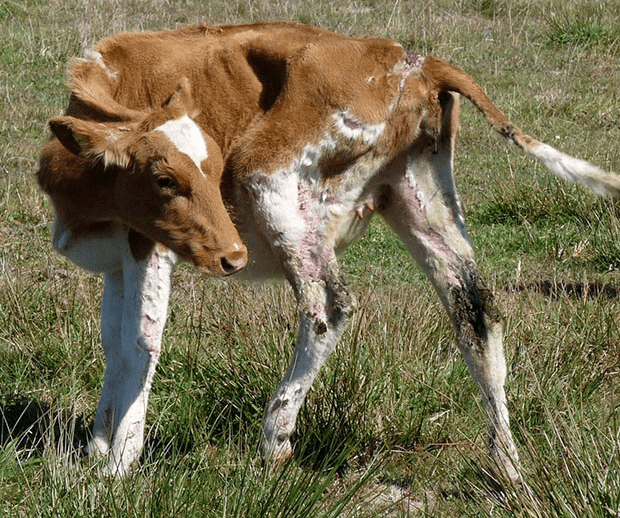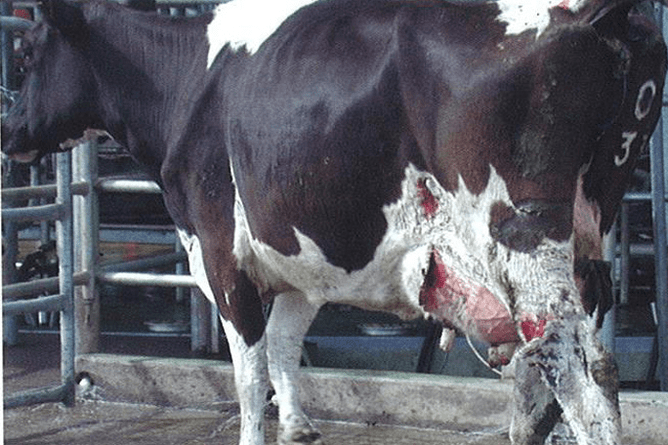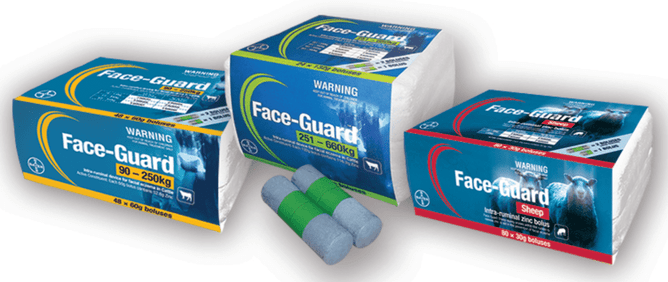It might not be from bubbles, but facial eczema spores at this time of year can cause liver damage in your cows!
The time after Christmas is for recovery, as our stomachs recover from too much food and our livers from being too merry! Every year, this seems to become harder and take longer. Do cows have these problems after the festive period too?
Yes! Cows do have problems with recovering their livers from Christmas onwards and, sometimes, this lasts till March! Unlike us, this is not because of too many mince pies and bubbles, but from eating too low down in the sward where the spores of the facial eczema fungus live.
The fungus and spores need a humid and warm climate (minimum temperature of 12 degrees). In other words, summers on the West Coast are ideal for it's growth!
Symptoms
Eating these spores (most of the time we cannot prevent the intake) will set off a cascade of reactions. In almost all cases, the liver is affected and, only in a few cases, there is skin damage (sunburn).
In all cases, there is a drop in milk production, with these losses varying from 10-40%!!
Besides the above symptoms, we have also seen
lower conception rates,
higher empty rates,
more mastitis,
longer treatment durations to recover from anything, and
even deaths.
All of this because of facial eczema!
Black cows are affected too!
As the fungus does not discriminate between black and white cows, and both cows look the same on the inside, the damage inside is the same. Black cows just don’t get the skin damage, but they are still affected.
Milk losses in numbers
To put a small milk drop into numbers:
With a production of 1.6 MS/cow/day and only a 10% drop, we have a 0.16 MS loss per day. Using a payout of $7.50 per MS, this equates to $1.20 loss per cow per day.
In other words, if humid summer weather lasts 2 months and you have a 300 cow herd, losses can easily accumulate to $21,600 or more.
Prevention
This liver damage due to the spores can be prevented by supplying your cows with zinc. There are different ways of doing this:
through the water,
with the meal,
via individual capsules.
Which option is best for you depends on your farm set-up and which age groups are present.
Zinc dosing to prevent facial eczema is based on body weight. If youngstock and yearlings are also present, dosing through the water might not be enough to prevent facial eczema in all age groups.
For more information on zinc supplementation, you can download DairyNZ's flowchart on 'Using zinc to manage facial eczema' here (scroll to the bottom of the page).
Local spore counts
Our clinic has a mailing list to warn farmers when the season is starting by reporting spore counts on our monitor farms around the district.
Although every farm is different, and even every paddock can have a different microclimate, measuring spore counts is the only way to see when to start treatment. Once you see symptoms, you are definitely too late!
If you want to take some pasture samples for spore counts on your own farm:
Cut a handful of grass with sharp scissors, approximately 1cm above ground level.
Repeat this procedure on at least 10 sites in a diagonal line across the paddock.
Avoid parts of the paddock with trees and hedges and contaminating samples with soil and roots.
Collect the sample in a clean paper bag and keep it in the fridge until bringing it into the clinic.
Repeat sampling in the same paddocks, using the same diagonal path, to see if there is an increase in spore count.
Remember, liver damage from facial eczema takes much longer for cows to recover from than us from our Christmas hangovers!!




